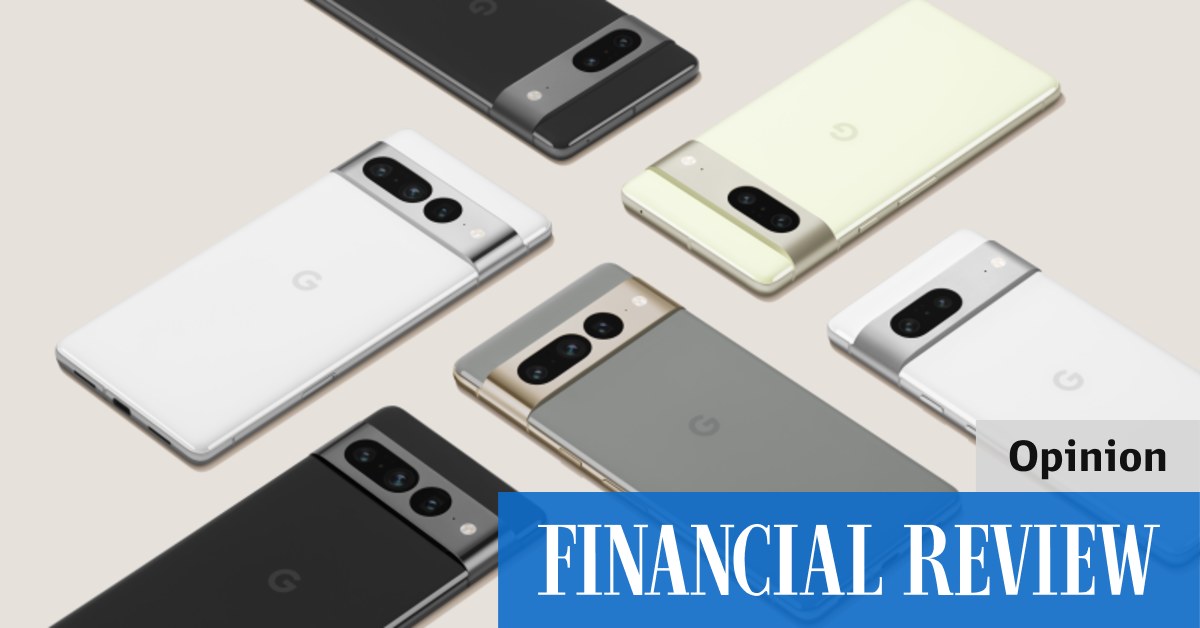Hmm, I think I’d better climb out of the recorder app before my sub editors go bananas.
Hello! Me again, typing now.
Darn it, I expected to get better results than that, dictating this review using the new, AI-powered offline transcription feature in the Pixel 7 Pro.
We’ve been testing it here in the Digital Life Labs for a few days now, and we’ve generally been getting much better results than what you see above. Perhaps that’s because the app is designed, not so much for old-school dictation, but for recording natural conversation and cataloguing it in an indexable and easily searchable way.
But it’s an interesting place to start our review of the Pixel 7 Pro, because it’s a clear example of where Google seems to be heading with its Pixel phones in its efforts to carve out a nice niche for itself as the number three phone maker in the world, behind Samsung and Apple.
Where Samsung and Apple (in particular) are building phones with so much horsepower they’re essentially PCs you can slip in your pocket, Google seems to be content releasing lesser-powered, lesser-priced phones that it then bolsters by building clever AI features, such as offline voice recognition in multiple languages, right into the silicon of the Tensor G2 chipset running the phones.
Google’s radically different approach shows up when you benchmark the Pixel 7 Pro, and get results that suggest it’s going to be a fairly miserable device, especially for gamers.
The Geekbench 5 benchmark, for instance, shows the Pixel 7 Pro’s single-core performance to be identical to the Pixel 6 Pro, which places it very much in the middle of the pack for Android phones, and well behind the iPhone 14 Pro, which is 77 per cent faster.
Meanwhile multi-core performance on this year’s Pixel is a mere 11 per cent better than last year’s model, which likewise means it’s a good deal slower than recent Android phones such the Samsung Galaxy Z Fold4 (which is 25 per cent faster) and the Motorola Edge 30 Ultra (30 per cent faster), and a great deal slower than the iPhone 14 Pro, which is 67 per cent faster according to Geekbench5.
And then there’s the graphics performance, which lags so far behind the Fold4 (46 per cent faster), the Edge 30 Ultra (also 46 per cent faster) and the iPhone 14 Pro (250 per cent faster), we don’t even know what to make of the numbers.
Clearly, when it sets out to make a phone, Google has other things in mind than conventional CPU and GPU performance, and, if the numbers are anything to go by, someone other than gamers.
And, I must say, I do like where Google’s head is.
The offline transcription engine, which does its processing using the Tensor chip’s neural engine rather than in the cloud where most voice recognition is done nowadays, is an incredibly useful feature for me as a journalist.
Indeed, it would be great for anyone who has to sit through endless meetings and then, perhaps, hold someone to their word at some later date.
The recorder lets you record interviews or meetings, and then go back and find a particular spot in the proceedings just by searching for a word that you remember was said at the time.
Yes, the punctuation could do with a little work, and yes yes yes I wish it would divide the transcription up according to who is speaking (it all appears as one, long monologue, which can get a little dense at times) but those are small quibbles compared to the overall value the new recorder brings.
The Android 13 operating system on the Pixel 7 can theme the screen icons to go with the colour of the phone itself.
The same machine-learning technology will also transcribe phone messages for you, if your carrier hasn’t already done it for you.
For many of us, that sort of feature is much more important than the ability to while away the hours playing some 3D-video game on the bus.
Likewise the camera on the Pixel 7 has some nice AI-based enhancements, such as improved skin tones for people who don’t happen to look like Google engineers, and a “cinematic blur” mode that lets you rack focus when you’re shooting video, to change the point of interest in the scene.
There’s also an AI-based “unblur” feature in the camera, which for the most part does a remarkable job of rescuing photos (even old photos taken by other cameras) ruined by camera wobble or when the subject of the photo chooses the exact wrong moment to move.
Unblur won’t perform miracles – it won’t save a shot where the subject is a mere streak across the frame, for instance – and some of the shots it does save can look a little over-processed at times.
But, honestly, even the over-processed ones are better than the originals, and there is a whole class of people (myself included) who would take that feature over 3D gaming prowess any day.
Or, as the Pixel itself would put it, “There is a whole class of people. Myself included, who would take that feature over 3D gaming prowess, any day.”
Close enough.
Likes: New features are actually useful.
Dislikes: Curved screen. Still sounds a little hollow when you tap the screen.
Price: $1299 for 128GB of storage, $1449 for 256GB and $1599 for 512GB.





